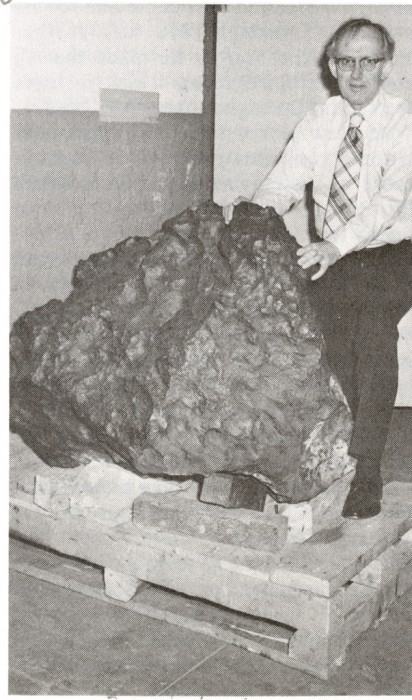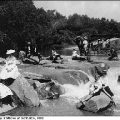Today in Smithsonian History: March 8, 1978

Curator Roy S. Clarke, Jr., poses with the Old Woman Mountains meteorite, which was found by prospectors in 1975 in the San Fernando Valley of California. Removing the meteorite from its resting place proved difficult because of the rugged terrain, the weight of the meteorite, and the desert’s summer heat. It took the assistance of the U.S. Marine Corps to get the job done. This 6,070 pound meteorite, the second largest ever to have been discovered in the United States, was the subject of research by the Smithsonian for approximately a year before being sent to a museum in California. Now kept in the Desert Discovery Center in Barstow, CA. (Photo by Richard Hofmeister, as featured in the Torch, March 1978.).
March 8, 1978 The Old Woman Mountains meteorite arrives at the National Museum of Natural History from Barstow, Calif., where it had been under the jurisdiction of the Bureau of Land Management. The meteorite was found by prospectors in 1975 in the Old Woman Mountains in the Needles Resource Area, San Fernando Valley. Removing the meteorite from its resting place proved difficult because of the rugged terrain, the weight of the meteorite, and the desert’s summer heat. It took the assistance of the U.S. Marine Corps to get the job done. This 6,070 pound meteorite, the second largest ever to have been discovered in the United States, was the subject of research by the Smithsonian for approximately a year before being sent to the Desert Discovery Center in Barstow.
Posted: 8 March 2019
- Categories:







